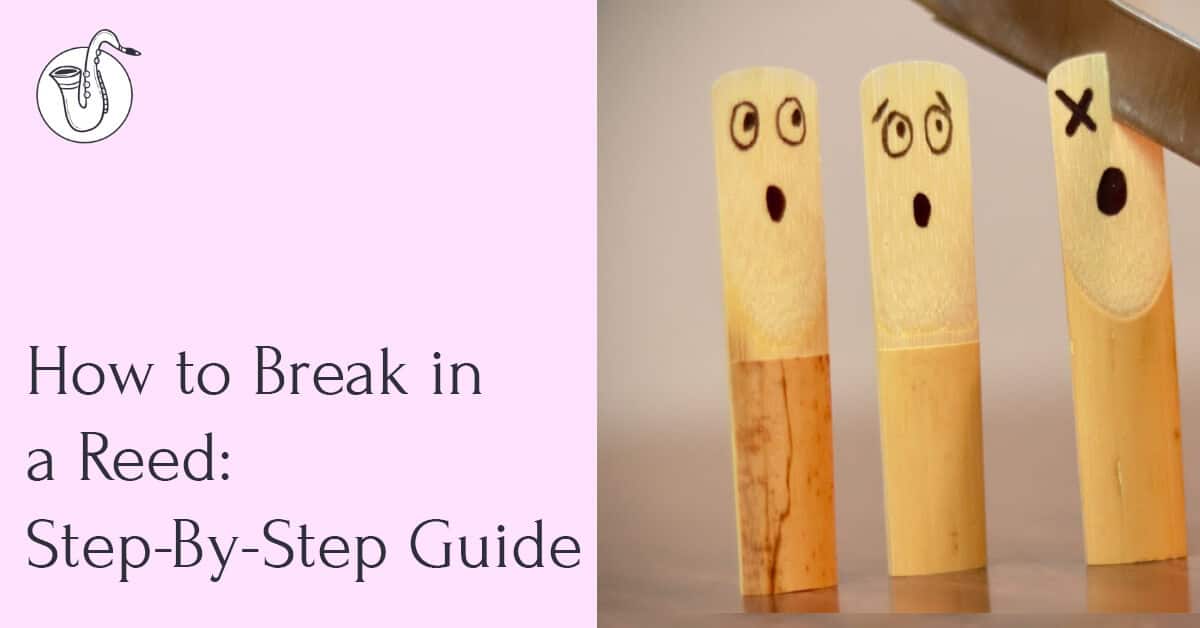Breaking in a reed is an important part of extending its lifespan and making sure it plays optimally, but like any given technique, some ways are better for breaking in a reed than others.
In this article, I’ll give you detailed steps for and the best tips on how to break in a reed for the easiest execution and most extended durability.
Table of Contents
5 Steps for Breaking In Reeds
1. Make sure you wet the reed thoroughly, whether in a glass of water or in your mouth while playing.
2. Play the reed for a minimum amount of time. Just a minute is excellent, and the max should be 10.
3. Repeat step 2 over the course of several days, making sure to leave the reed to dry after each play in a storage container.
4. Repeat steps 2 and 3 over the span of 4 to 7 days, adding increments to the duration that you spend playing your reed.
5. Decide whether you want to keep the reed in your rotation or not after you break it in.
4 Tips for Breaking In Reeds
1. Make sure to go through long times, arpeggios, scales, and so forth at dynamic levels, but in moderation.
2. Don’t try exhausting techniques like extended ones or altissimo.
3. Mark the reeds that are in the breaking in process. Also, make sure to leave marks that denote the days spanned in the process.
4. Don’t immediately decide that you love or hate the reed until the breaking in process is done. The best baritone, tenor, soprano and even best alto sax reeds -the ones found in abundance- take some time to start working properly.
Related: Rico vs. Vandoren Brands Comparison
What the Process of Breaking In a Reed Entails
First things first, it’s important to understand that when you break in a reed, the process actually happens over the span of a couple of days. The first time a reed is played is when it’ll absorb most of the moisture it will retain by and large, and that’s why waterlogging is easiest when you’re using a brand new piece of equipment.
During your first use, you shouldn’t play the reed for more than 10 minutes, preferably stopping at 5. Then, you can extend that period day by day until the reed is ready and fully playable. In total, the process takes around 4 days and up to a week, so it would be time-efficient to break in several reeds at a time. However, that’s not the most hassle-free process either, and I prefer breaking in a new reed just as I feel that my old one has stopped working or destabilized.
Why Do I Need to Break In My Reed?
The simple reason is that breaking in your reed extends its lifespan. But not only that, a reed’s playability and sound can change a lot with the first few times you play it. So, the process is like training your reed to get wet and dry without losing its consistency.
That’s why the first couple of times that you play your saxophone with a new reed aren’t enough to finalize your opinion of whether it’s a good one or not. With every play, the changes in how the reed plays gradually decrease until there aren’t any discernible differences between one playing session and the next, as long as your provide proper maintenance.
Also Read: Fundamentals vs. Overtones
Final Thoughts
When you purchase a new set of reeds, make sure that you break each of them in, and you might break in multiple reeds at once.
Make sure that even if you don’t like how the reed plays, keep trying, or store them again in the plastic bag and return to them after a good period has passed. Only then should you dismiss a reed completely, as if it doesn’t sound right even after breaking it in and after it’s been played several times to no avail.

